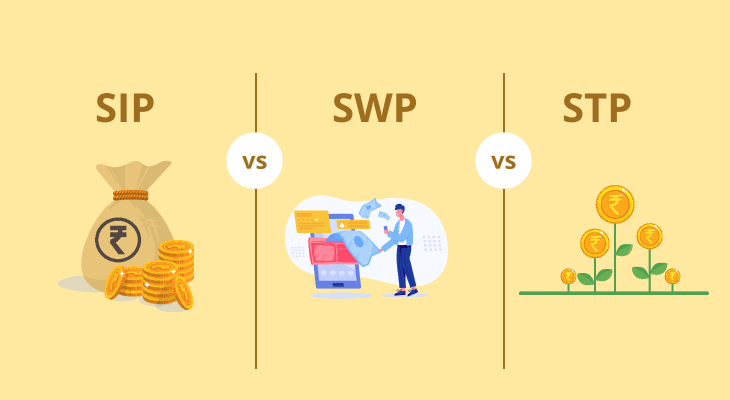
What are Liquid Mutual Funds?
When you think of mutual funds, you may typically think of a long-term investment horizon spanning several years. While it is true that many mutual funds may have the potential to deliver better returns over the long run, some funds are specifically created with short-term investment horizons as the defining feature.
These funds offer one key advantage to investors — namely liquidity. Hence the name liquid funds. If you’re not sure what a liquid mutual fund is and how it works, this article can give you the clarity you need. Find out the meaning of liquid funds, their advantages and who should invest in them.
What is a Liquid Fund in Mutual Funds?
A liquid fund is a type of mutual fund that invests in a wide range of short-term assets. These assets may include government securities, commercial papers, treasury bills and certificates of deposit. SEBI norms dictate that liquid funds must invest in debt and money market instruments with maturity periods not exceeding 91 days.
Such short maturity periods facilitate easy availability of funds within a few weeks or months. This, in turn, ensures cash liquidity. Now that you know the meaning of liquid funds, let’s take a closer look at how they work.
A Closer Look at Liquid Funds
Liquid funds typically invest in short-term assets with a good credit rating. The key requirement they need to meet is liquidity. In addition to that, the Securities and Exchange Board of India (SEBI) has issued a few guidelines to regulate the workings of a liquid fund. They include the following:
Liquid funds cannot invest in risky assets.
They cannot invest in unlisted commercial papers.
The overall exposure in any sector must not exceed 20%.
At least 20% of the portfolio of liquid funds must consist of liquid assets like cash and cash equivalents
The above regulations ensure that the fund is able to meet any redemption requests from investors easily. As for the returns on liquid funds, the main source of earnings is interest payments from the liquid debt assets held. A small portion of the returns may be traced back to short-term capital gains.
Additionally, liquid funds are also fairly immune to long-term interest rate changes in the market. This is because they only invest in securities with maturity periods of not more than 91 days.
Benefits of Liquid Funds
Liquid mutual funds offer a variety of advantages for investors. Here is a closer look at the top benefits of these funds.
Low Investment Cost
Liquid mutual funds are low-cost investment options because they do not require any extensive active management. As a result, these mutual funds often carry interest rates of around 1% or lower, allowing you to reduce the investment cost and maximise the returns from your investment.
Low Risk
Liquid mutual funds also carry low levels of risk because of their limited exposure to risky investments. The primary focus of these funds is to secure the investment corpus and generate steady returns while ensuring a high level of liquidity. In addition to this, the risk from interest rate fluctuations is also reduced due to the short holding period.
High Liquidity
The primary advantage of liquid mutual funds is that they can be redeemed within a very short period. This makes them excellent choices if you are looking for an investment option to park your funds in for a short period, or if you want to easily redeem your corpus in the near future.
Easy Entry And Exit
The process of investing in liquid mutual funds as well as redeeming your investments is extremely easy. In fact, redemption is often completed within one business day. Some new-age liquid mutual funds even offer facilities like instant redemption, thus ensuring that your funds are easily available when you need them.
Should You Invest in Liquid Funds?
Having seen what a liquid mutual fund is and how it can benefit you, you may now be wondering if this is a suitable investment avenue for your portfolio. Typically, you could consider investing in liquid mutual funds if you:
Have A Short-Term Investment Outlook
If your investment outlook is for a period of 3 months or lower, liquid mutual funds may suit your requirements well. However, if you have a slightly longer investment tenure in mind, like 6 months or 1 year, you may have to look for other avenues.
Want To Build An Emergency Fund
Liquid funds may also be a good choice if you want to build a contingency fund. Since the funds are relatively safe and easy to withdraw, you can rest assured that in the case of a financial emergency, you will have easy access to cash.
Want To Temporarily Park Your Funds Safely
If you recently received a large sum of money from a bonus at work, an inheritance or any other kind of windfall, liquid funds offer an easy way to safely park these funds temporarily. You can then create a financial plan and put the funds to a different long-term use.
Need A Channel To Route Equity Investments
You can also park your capital in liquid mutual funds and invest in the equity market steadily via a Systematic Transfer Plan (STP). This way, your capital is preserved and you also earn returns on the liquid funds in the meantime.
Taxation of Liquid Funds
The taxation of capital gains, if any, on the redemption of liquid funds is taxed based on the holding period as follows:
Short-Term Capital Gains (STCG)
If the gains are realised from the sale of liquid funds that were held for less than 36 months, they are classified as short-term capital gains and taxed at the income tax slab rate applicable to you.
Long-Term Capital Gains (LTCG)
If you realise the gains from the sale of liquid funds held for more than 36 months, the profits are considered as long-term capital gains and are taxed at a flat rate of 20%. However, you get the benefit of indexation on the long-term capital gains.
Note: With effect from April 1, 2023, both short-term capital gains and long-term capital gains from debt funds will be taxed as per the income tax slab rate applicable to you. So, if the liquid fund you have invested in is classified as a debt mutual fund, this tax provision as introduced in Budget 2023 will be applicable.
How to Find the Best Liquid Fund
To find the best liquid mutual fund for your portfolio, you must consider the following aspects and make an informed decision accordingly.
Returns From The Liquid Fund
Liquid funds primarily invest in short-term debt instruments. So, the returns they offer are generally in line with the prevailing short-term interest rates. While they usually offer better returns than a regular savings bank account, they may not be as high as longer duration debt funds or equity funds.
This is why it is crucial to check the historical returns of a liquid fund to gauge its performance. However, it’s essential to also remember that past performance is not indicative of future results.The Liquid Fund’s Expense Ratio
The expense ratio of a liquid fund represents the annual fees charged by the fund house to manage and operate the fund. It is expressed as a percentage of the fund’s average assets under management (AUM). A lower expense ratio effectively maximises the net returns you earn from the fund.
This is particularly relevant in the case of liquid funds, where the returns are typically lower than funds in other categories. So, even a small difference in the expense ratio can have a noticeable impact on the net returns.The Fund Size (AUM)
The AUM or Assets Under Management indicates the total market value of investments managed by a mutual fund. A substantial AUM suggests investor confidence and indicates that the fund has been successful in delivering consistent returns over time.
Larger AUMs can also benefit from economies of scale, potentially leading to a lower expense ratio over time. However, it’s also essential to remember that size alone shouldn't be the determining factor, since some smaller funds can also outperform larger ones.Credit Quality Of The Portfolio
The credit quality of a liquid fund can be assessed by the credit ratings of the instruments in which the fund invests. A higher credit rating indicates lower risk of default. In the case of liquid funds, investments are usually made over extremely short durations in short-term debt instruments, often with high credit ratings. So, you need to watch out for funds taking higher credit risks to generate better returns because this can increase the risk of defaults.
Reputation Of The Fund House
The reputation of the fund house or asset management company (AMC) is another crucial factor. A well-established fund house with a good track record offers benefits like robust research capabilities, efficient fund management and a consistent approach towards risk management. The experience and credibility of the fund house can be a good indicator of the overall reliability and performance of its funds.
Exit Load
Exit load is the fee charged by the fund house when you redeem or sell units of a fund within a specified period. For many liquid funds, there's usually no exit load if the investment is held beyond a short threshold.
However, some funds might impose a small fee for redemptions made within that period. It's essential to be aware of any such charges because they can reduce the effective returns, especially if you plan on withdrawing your investment shortly after purchasing units in the fund.
Conclusion
This sums up the meaning of liquid funds, how they work and the advantages they offer. Also, now that you know what a liquid mutual fund is and whom it is suitable for, you can make an informed decision about whether or not to include these funds in your investment portfolio. Keep in mind that if you choose to invest in liquid funds, they are ideal for short-term goals rather than long-term targets.
SIPs let you invest small amounts regularly, making it easier to stay consistent with your goals. With time, your money grows faster through compounding, helping you get the most out of your investments. Try our SIP Calculator to see how your money can grow and make smarter plans for your future.
FAQ
Are liquid funds better than fixed deposits?
Both liquid funds and fixed deposits are relatively safe investments. If you have a short-term investment outlook, liquid funds may be better for you than fixed deposits.
Can I start an SIP in liquid mutual funds?
Yes, however, since the investment horizon is generally up to 91 days only, it may be a smarter option to invest a lump sum in the liquid fund of your choice.
Do liquid funds come with any lock-in period?
No, liquid funds do not have any lock-in period.
Is there an exit load in liquid funds?
The exit load in liquid funds, if any, varies from one fund to another.
Are liquid funds safe investments?
Yes, liquid mutual funds are generally safe investment options.


